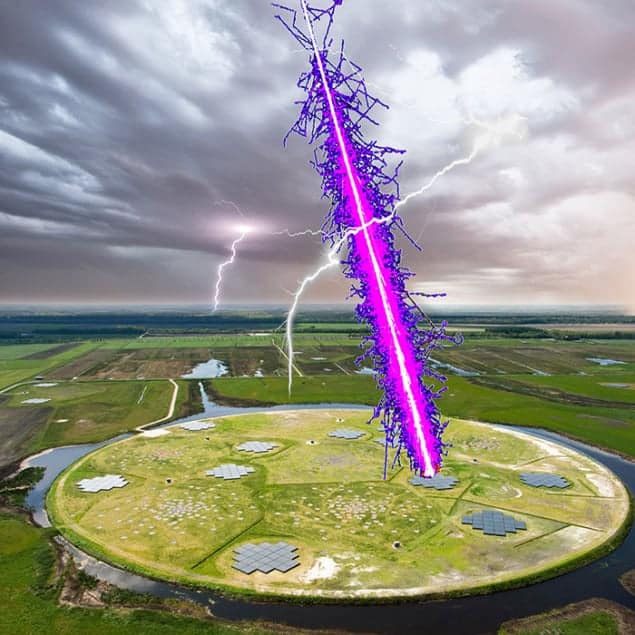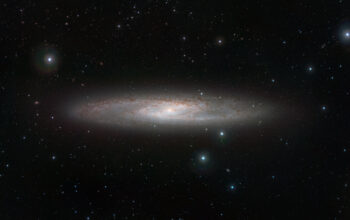The intricate relationship between cosmic rays and the electric fields present in thunderstorms poses a fascinating inquiry: how can invisible, high-energy particles from outer space contribute to our understanding of terrestrial meteorological phenomena? This question invites both curiosity and challenge, as it unveils the profound connection between astrophysics and atmospheric sciences. As we delve into the intricacies of this phenomenon, we uncover the mechanisms at play and the implications for our knowledge of weather systems.
The foundational premise of this exploration lies in understanding what cosmic rays are. Cosmic rays, primarily consisting of protons and atomic nuclei accelerated to near-light speeds, surge through our universe, originating from sources ranging from supernovae to active galactic nuclei. Upon entering Earth’s atmosphere, these energetic particles collide with atmospheric molecules, resulting in a cascade of secondary particles. This cascade can, intriguingly, indirectly illuminate the electric fields associated with thunderstorms.
Thunderstorms are characterized by the potent interplay of charge separation and electric fields. In a typical storm cloud, updrafts and downdrafts conspire to segregate positive and negative charges, thereby creating immense electric fields that culminate in lightning strikes. As these fields grow in intensity, they have the capability to influence the surrounding environment, including the cosmic rays traversing the atmosphere. This synergy raises an important question: can cosmic rays serve as sensitive tracers for mapping the electric fields generated within thunderstorm clouds?
The recent advancements in scientific instrumentation provide an answer that veers toward the affirmative. By employing sophisticated detection systems, researchers have been able to capture coincident events of cosmic ray showers and thunderstorm activity. These detectors are strategically positioned to capture data that correlate cosmic ray intensity variations with the electric field dynamics of thunderstorms. Such an arrangement empowers scientists with the potential to visualize the otherwise hidden electric fields in these atmospheric giants.
This research centers around the concept of “air showers,” wherein cosmic rays create a cascade of secondary particles as they collide with air molecules. The characteristics of these showers are markedly influenced by the surrounding electric fields. Specifically, when these cosmic showers encounter the highly organized electric fields of a thunderstorm, they reveal distinctive signatures that researchers can decode. These signatures furnish critical insights into electric field strength, charge distribution, and even the developmental stages of thunderstorms.
Yet, what challenges arise in this ambitious pursuit? One significant hurdle is the sheer variability of thunderstorms. Each storm presents a unique set of characteristics, influenced by geographical, climatic, and temporal factors. Consequently, the data collected from cosmic ray interactions must be meticulously analyzed, requiring robust statistical frameworks to ensure reliability and repeatability. Furthermore, the presence of background noise—both atmospheric and terrestrial—can obscure cosmic ray signals, complicating the interpretation of results. Tackling these obstacles demands collaboration across multiple scientific disciplines, including atmospheric physics, particle physics, and data science.
Additionally, understanding the implications of cosmic ray interactions with thunderstorms extends beyond mere atmospheric characterization. These interactions might illuminate pathways for enhancing weather prediction models. By incorporating cosmic ray data into weather forecasting systems, meteorologists could improve storm tracking and lightning prediction reliability. The potential to harness cosmic rays as predictive tools opens up new avenues in meteorological research, inviting scientists to consider how cosmic influences affect terrestrial weather phenomena.
Further compounding the complexity of this inquiry is the role of climate change in thunderstorm dynamics and electric field behaviors. Alterations in temperature, humidity, and atmospheric composition can profoundly affect storm development. As cosmic rays interact with changing environments, understanding the broader implications for storm dynamics becomes increasingly critical. Could we witness shifts in lightning frequency or intensity as a direct consequence of altered cosmic ray flux patterns, driven by changes in solar activity? This possibility beckons further examination, as researchers seek to disentangle the interdependent factors that ultimately shape our understanding of thunderstorms.
The intersection of cosmic rays and thunderstorms exemplifies a frontier of scientific inquiry, inviting us to reconsider our existing frameworks of knowledge. As researchers continue to develop and refine measurement techniques, the potential for groundbreaking discoveries remains tantalizingly close. Might we one day be able to predict thunderstorms with unprecedented accuracy by deciphering the interplay between cosmic rays and electric fields? The promise of such advancements encourages collaborative endeavors that combine expertise across disciplines, forging connections that transcend traditional boundaries.
In conclusion, the exploration of how cosmic rays illuminate the electric fields associated with thunderstorms serves as a paradigm for interdisciplinary collaboration. It challenges conventional perspectives and poses critical questions about climatic dynamics in a changing world. The quest to map electric fields using cosmic rays unveils pathways for innovation in meteorology and emphasizes the necessity of nuanced understanding in our increasingly complex environment. As we pursue the intricacies of these interactions, we edge closer to a transformative understanding of both our atmospheric phenomena and the cosmic influences that dance above us.










